Complete Guide to the Khvamli Mountain Hike Near Kutaisi
12 min readEverything you need to know about visiting Mount Khvamli, an easy day hike near Kutaisi, Georgia.
When I first moved to Kutaisi in 2021, I had a perfect view of Khvamli Mountain’s double cuesta from my bedroom window.
I am not at all the type of person who looks at a mountain and thinks, I want to climb that. But before I even learned its name, or heard about the legends that surround it, I found Khvamli very alluring.
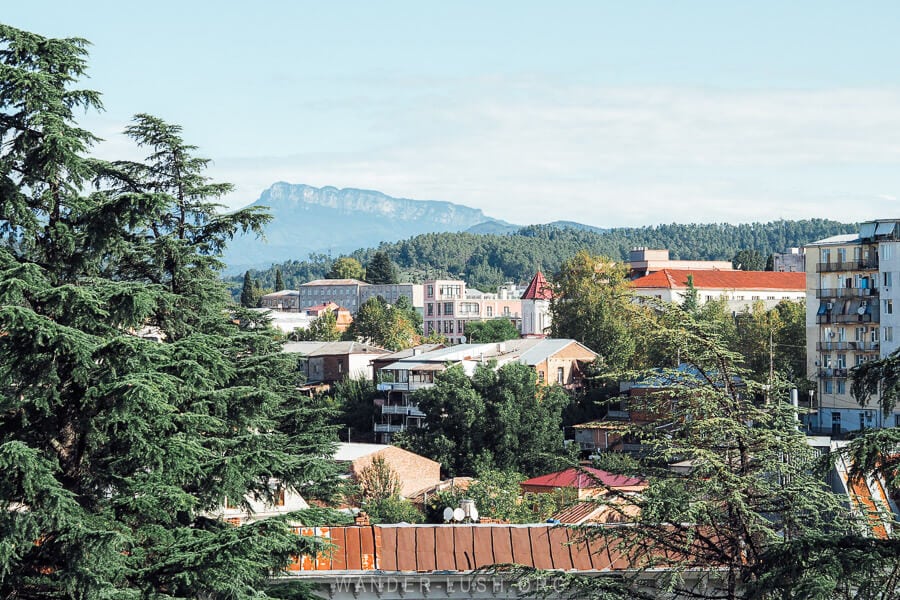
When my friend and guide Timothy Merkel suggested we hike to the highest point on Khvamli, I was excited to finally get an up-close look at the mountain that has been a backdrop to my life in Kutaisi for the past three years.
This guide covers everything you need to know about the Khvamli Mountain hike, an alternative day trip from Kutaisi – plus other things to do in Lechkhumi Region, including a couple of waterfalls to see along the way.
I will be releasing a more comprehensive guide to this underrated region later this summer – watch this space for more Lechkhumi goodness.
Please note: This post contains affiliate links, meaning I may earn a commission if you make a purchase by clicking a link (at no extra cost to you). Learn more.
What is Khvamli, and why hike there?
Khvamli is the most prominent massif in Lechkhumi Region, a beautiful part of northwestern Georgia characterised by limestone formations, secret caves, and full-bodied wines made from grapes that fight to survive on terraces hacked from the mineral-rich, rocky soil.
Lechkhumi is administered as part of Racha-Lechkhumi and Lower Svaneti, Georgia’s most sparsely populated region. Its main town is Tsageri, 65 kilometres north of Kutaisi (another place I am yet to properly explore).
Khvamli is a huge part of Lechkhumi’s identity. The mountain is shrouded in myth – most notably, this is said to be the place where Prometheus was shackled by Zeus as a penance for introducing humanity to fire. The Georgian version of this fable (of which there are purportedly 150 different variants) closely resembles the tale of Prometheus, with Amirani cast as the main protagonist.
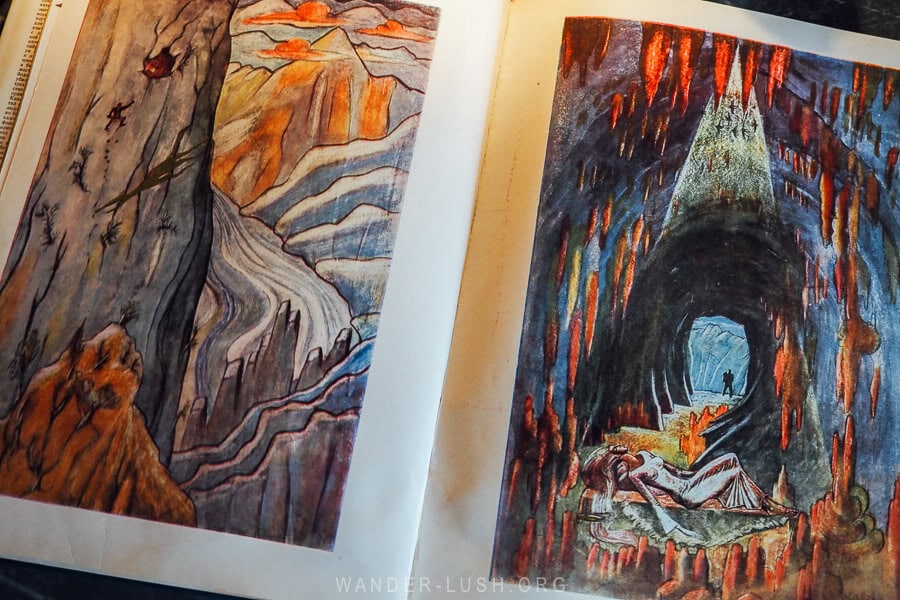
Prometheus Cave, the famous karst cave that is a major tourist attraction in Western Georgia, was of course named after the Titan (not that it has any connection to Prometheus at all). For context, it is located close to the base of Khvamli Mountain, about 50 kilometres from the trailhead.
Caves are important to Khvamli, too: Officially there are 19 caverns on the mountain face that have been explored and mapped, but I am sure there are many more.
During the 13th century Mongol invasion, it’s said that the kingdom’s treasures were hidden in Khvamli’s caves. Another story says that the Georgian kings stashed a cache of gold inside the rocky chambers. In the Soviet period, the accomplished mountaineer Alexander Japaridze was sent on a mission to find the bounty (apparently on the orders of Stalin) – but he came up short.
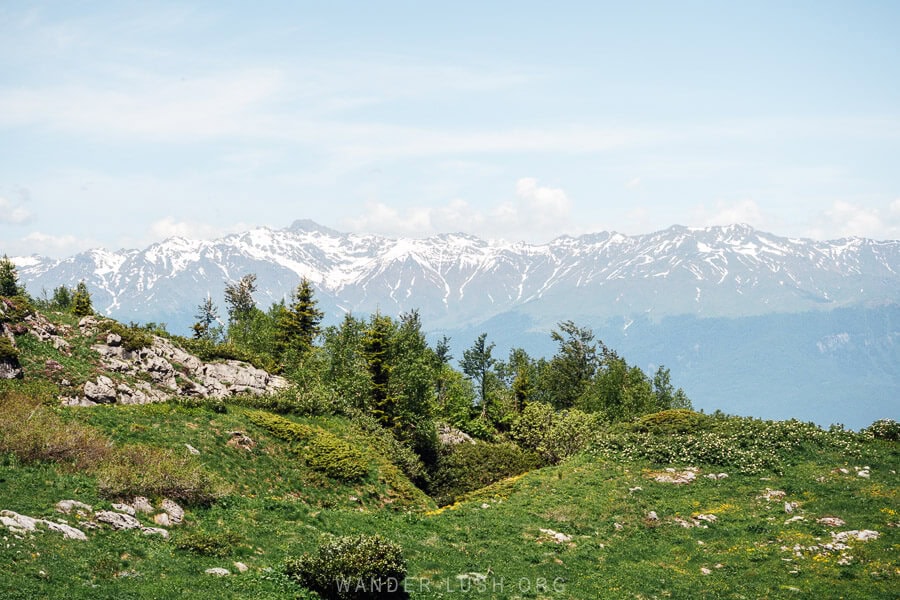
Khvamli is one of the most prominent peaks in Western Georgia – which means you get incredible views of both the Greater Caucasus to the north, and the Lesser Caucasus to the south, plus dozens of other peaks in Imereti and Racha as you ascend.
One of the best moments of the hike for me was seeing Tskhrajvari in the far distance – I am very grateful that Tim was with us to point it out. I must admit it was pretty cool to look at the peak and think, I DID climb that!
Khvamli is classically picturesque in the Caucasus sense of the term, with wildflowers and horses grazing in meadows, snow-capped peaks all around, and a pretty church at the half-way point. The air is cool and fresh, which is a welcome relief in summer.
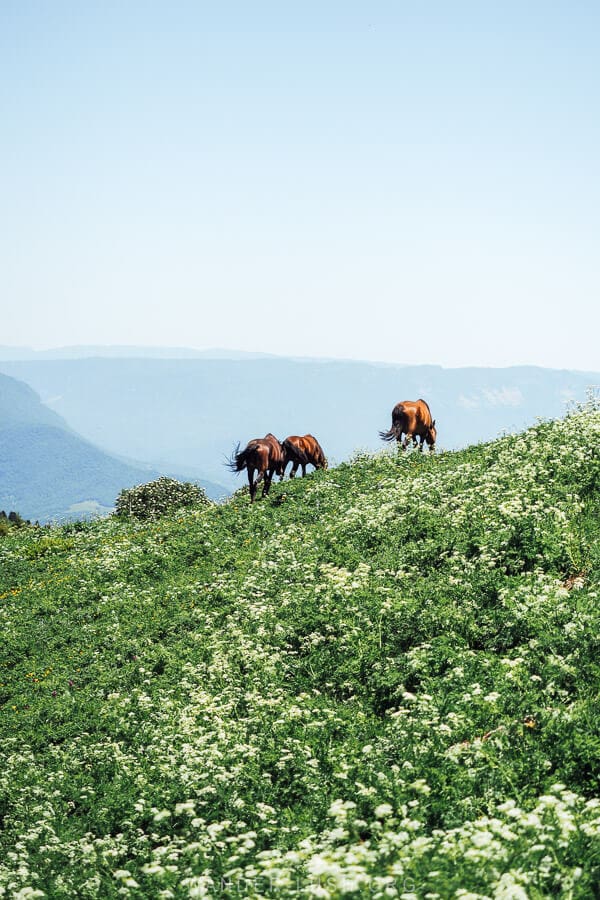
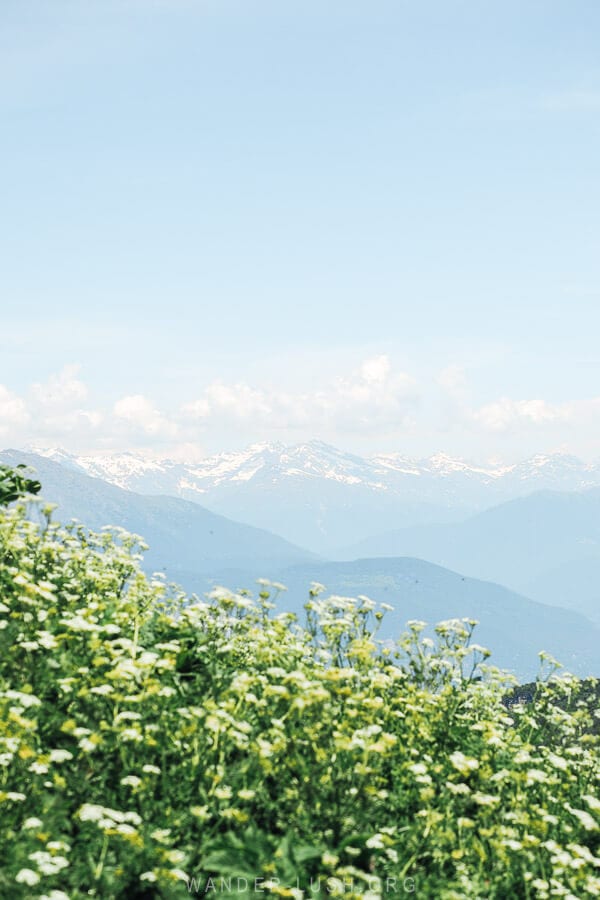
Khvamli Mountain Hike: Overview & basic info
This hike does not involve hiking up the mountain – although that is possible. The hike we did (and the route I would recommend) involves driving as far up the mountain as possible then walking to the peak from there.
→ Distance: 2 kilometres (1.2 miles) from the parking area to the peak, or 14 kilometres (8.7 miles) from the main road to the peak.
→ Time required: 2-4 hours return from the parking area to the peak. We did the hike in 3 hours and 45 minutes, which included an hour at the top to take photos and relax. Add 7-8 hours if starting and finishing on the main road.
→ Terrain: Mix of dirt tracks and uneven, rocky plateau.
→ Difficulty level: Easy (the trail is mostly flat save for a few uphill bursts; good mobility is required for the steep and uneven parts).
→ Start/end point: Khvamli parking area (1.75 hours from Kutaisi / 7 hours from Tbilisi).
→ Hiking season: Year-round (best between April and November).
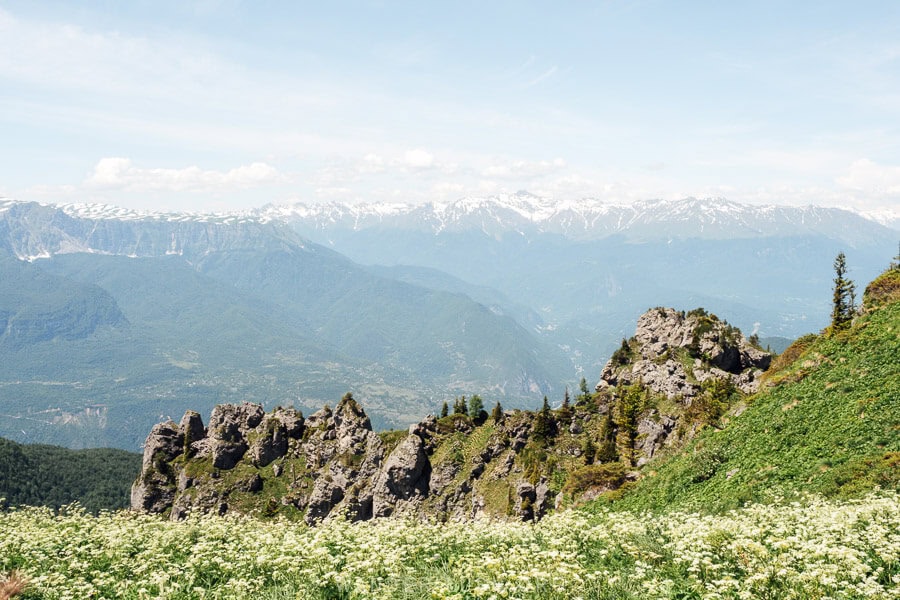
When to do the hike
Khvamli is accessible throughout the year, provided there hasn’t been heavy rain or snow in the days prior. For safety, avoid hiking in foggy conditions.
I recommend doing this hike in spring or autumn. We went in the first week of June and were met by both wildflowers and patches of frost on the trail. As the path is quite exposed (and in places, the rocks reflect the sun, making it feel even warmer than it is), I would only recommend hiking in the very early morning during summer.
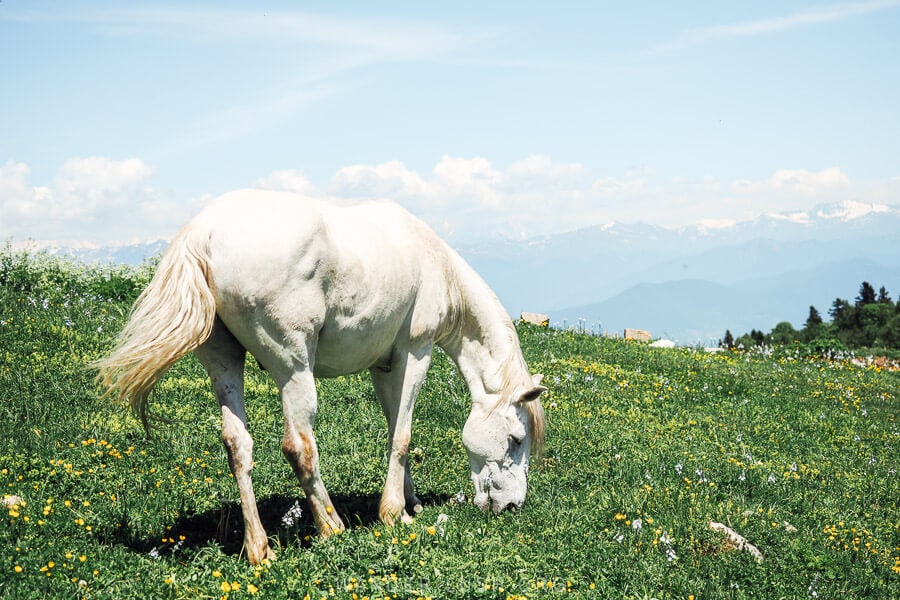
The annual Khvamloba feast takes place on the mountain every year on the 8th Saturday after Orthodox Easter. To mark the occasion, people from the surrounding villages walk up the mountain and attend a dawn church service before enjoying food and wine. This is a great time to visit if you want to experience a unique Georgian ritual.
The forests on and around Khvamli are deciduous, thus autumn (late September/October) is a great time to see fall colours on this route.
What to wear & what to bring with you
Good walking or preferably hiking shoes are recommended to handle the uneven terrain. If you have poles, these would come in handy – but they are not mandatory. There are tall plants in areas (including some giant hogweed) so I recommend wearing long pants.
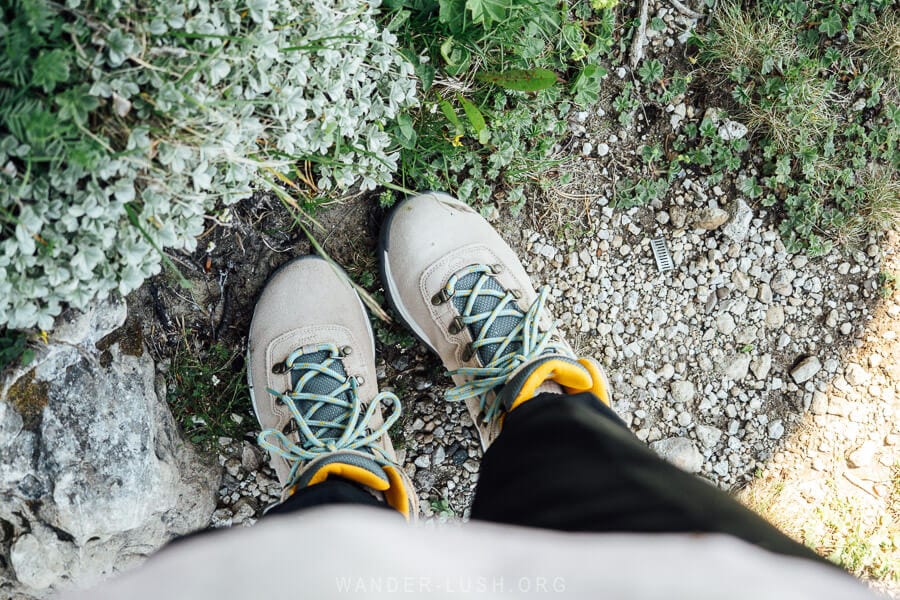
There is supposed to be a water source on Khvamli near the camping area, but we didn’t see it. I recommend bringing enough water with you to last the day. There is a mountain spring on the side of the road before the turn-off from Khvamli (see the exact location here).
I also suggest you bring some snacks. Churchkhela is the perfect hiking food because there is no trash to leave behind, only a piece of string! You can buy delicious homemade churchkhela inside the Kutaisi Green Bazaar.
Do you need a guide?
The Khvamli trail is signposted with yellow signs and standard flag trail markings. There are places where there are no markings, and several sections where the trail deviates.
If you are an experienced hiker, you shouldn’t have any issues. If you are a beginner like me, or you just prefer to be accompanied by someone with good knowledge of the area, then it’s a good idea to go with a guide.
Keep in mind that you really do need private transportation to get to the trailhead as well (more details below).
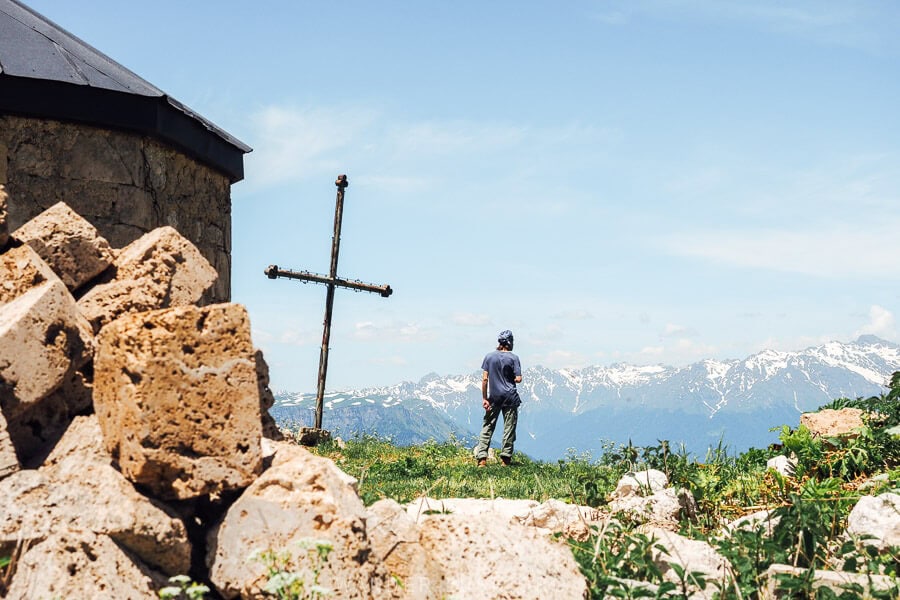
My guide Tim recently launched his own boutique company, Timothy’s Tours. I wouldn’t hesitate to recommend him for hikes in this area (he knows Lechkhumi extremely well, and even has a house here) or indeed for trails around Tbilisi.
Inquire via the website, and tell him I sent you.
How to get to the trailhead from Kutaisi
It is best to travel to the trailhead with a private car. If you don’t have your own car, you might be able to organise a taxi from Kutaisi – expect to pay around 70 GEL one-way or slightly more than double that for a round-trip, including wait time while you do the hike.
The turn-off for Khvamli is located along the Kutaisi-Tskaltubo-Tsageri-Lentekhi-Lasdili Road, around 55 kilometres or 75 minutes’ drive from Kutaisi (see the exact location of the turn-off here). Ascending the mountain to the marked parking area takes another 30-40 minutes approximately (see the exact location of the parking area here). This road is steep in sections, but completely paved and in good condition (navigable by sedan).
Lechkhumi is prone to mudslides, particularly in spring, so please take care on the road if you are self-driving. It is a good idea to check conditions locally before you set off – ask around, or visit Geo Road for any updates.
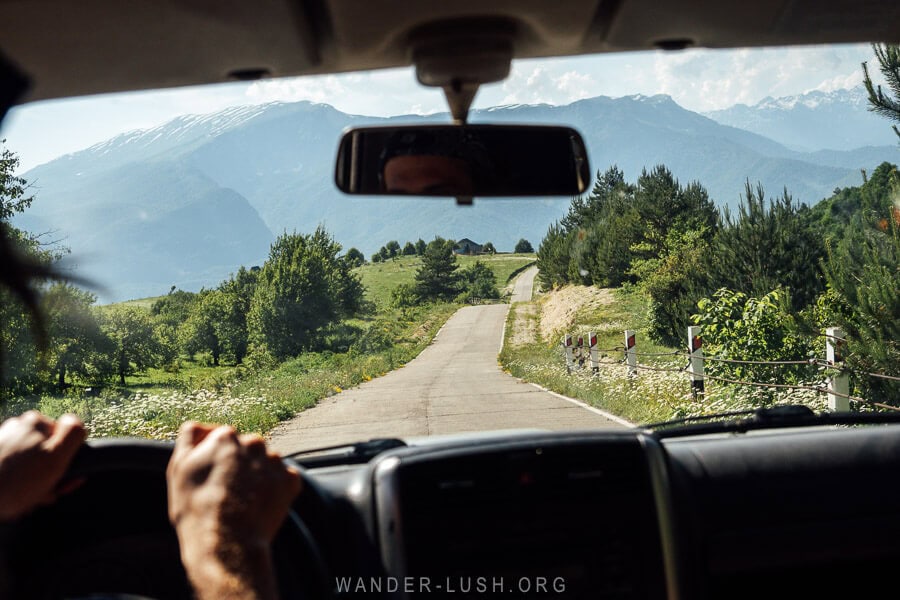
It is not really practical to use public transportation (a marshrutka minivan) to get to the trailhead, as vans can only take you as far as the turn-off for the Khvamli road. Vans bound for Tsageri leave from Kutaisi’s Central Bus Station on Chavchavadze Avenue three times a day at 11am, 2pm and 4pm. A ticket costs 10 GEL. Ask the driver to let you out on the highway.
Unless you are lucky enough to hitch a ride the rest of the way, starting from this point will add an extra 28 kilometres – or 6-8 hours (return) – to the hike. Now that there is a new paved road on Khvamli, you will have to walk on the road shoulder. Transportation on this route is limited, so you might have trouble finding a lift back.
Description of the Khvamli Hike
We arrived at the parking area at 12.30 midday and completed the hike in just under four hours. We mostly followed the main trail, with a couple of detours here and there as recommended by Timothy.
From the parking area, the trail first takes you west to the plateau, then south-west to the peak. You then return to the carpark the same way you came.
The campground
The first landmark you come to after the parking area is the campground. Camping is permitted in this cleared area between the trees – and it does look like a rather nice place to overnight.
It is quite popular to hike to Khvamli peak for the sunrise and watch the silhouette of the mountain rising over the Black Sea. If you are planning to do this, it’s a good idea to do the drive during daylight hours and spend the night on the mountain.
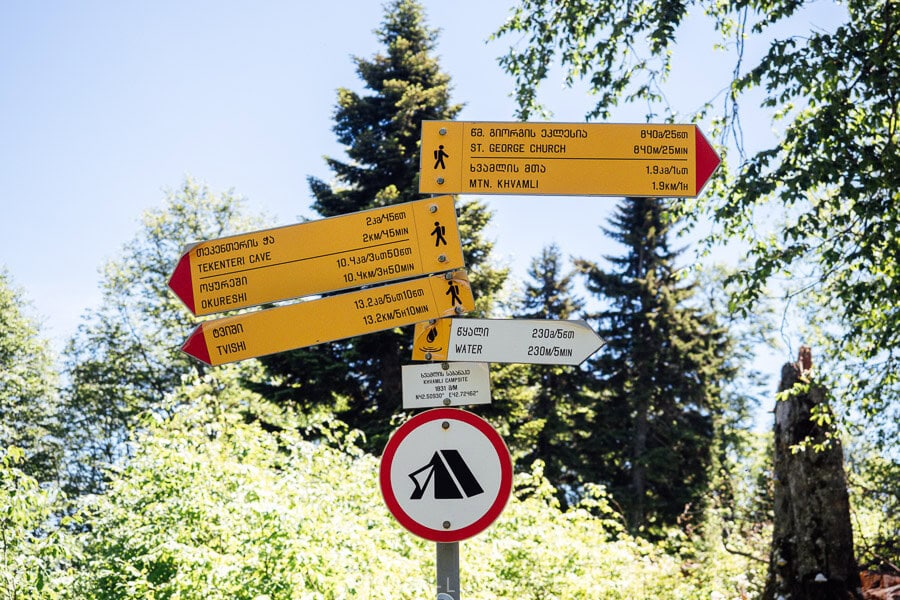
The path is open, wide and fairly even at this point, with some loose rocks in sections. After the campground, you enter the forest and the trail becomes a series of big rock slabs, almost like a boardwalk.
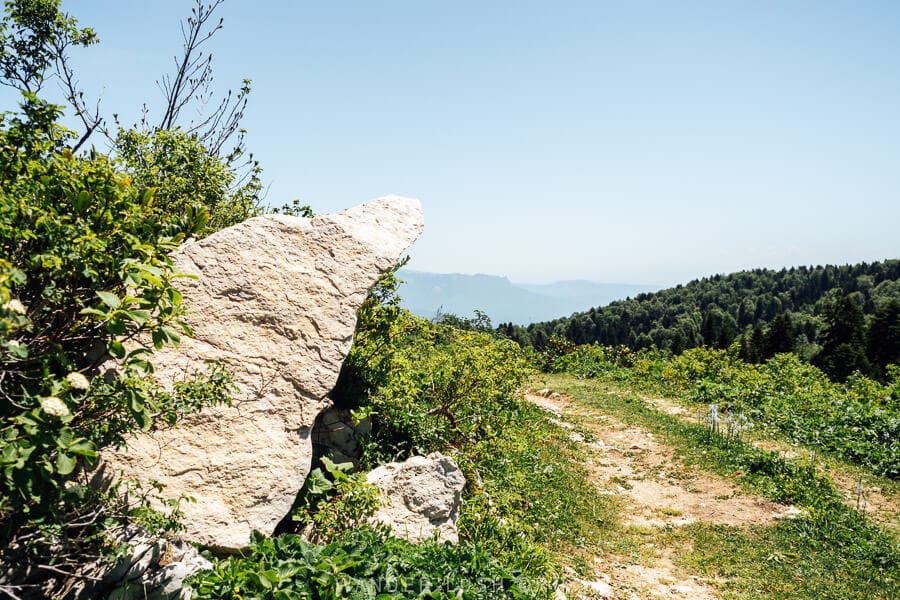
You then come to the second yellow trail marker where arrows point you north-west to the plateau or south-west to the peak (see the exact location of the trail sign here).
St. George’s Church & the plateau
I recommend stopping to see the plateau on your way up rather than on your way down.
After the trail sign, there is a slight uphill, then the mountain flattens out into an open meadow threaded with veins of chalky white rock. The tiny Church of St. George sits in the centre of the plateau, enclosed by low walls and piles of stones salvaged from an earlier structure.
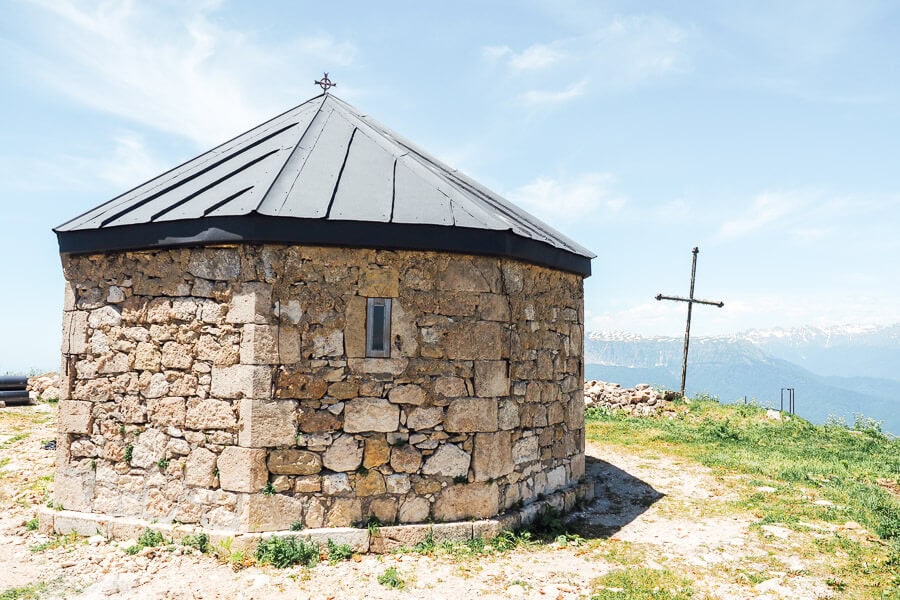
An active church and the venue for Khvamloba, St. George’s was constructed from local limestone in the first years of the 20th century atop a much older church that is thought to date to the 12th-13th centuries. As of this year, it has a shiny new roof and all new internal wooden roof beams.
The shape of the church is quite interesting: From the outside, the corners are on right angles, but inside it is curved. We arrived to find the door open. Inside, there is an altar and several icons carved from wood.
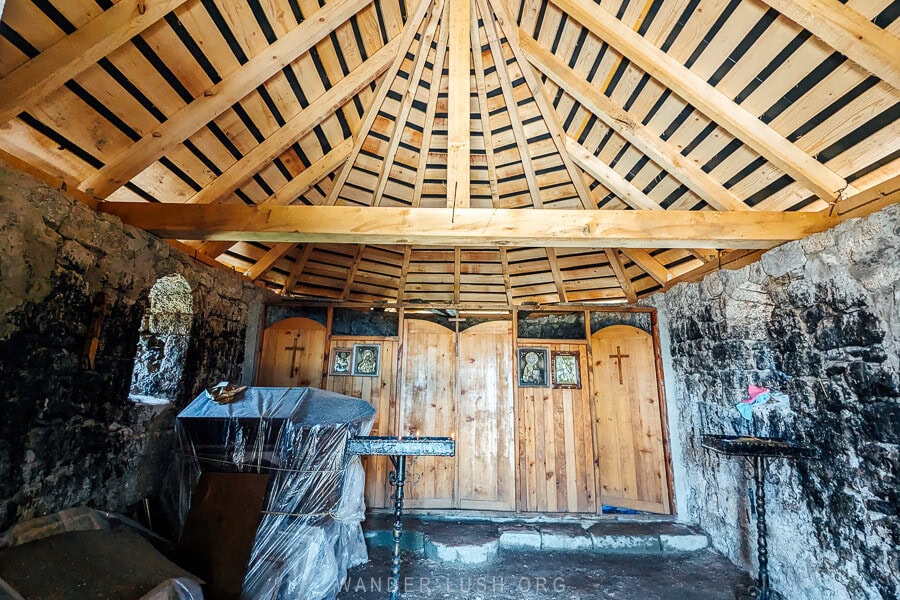
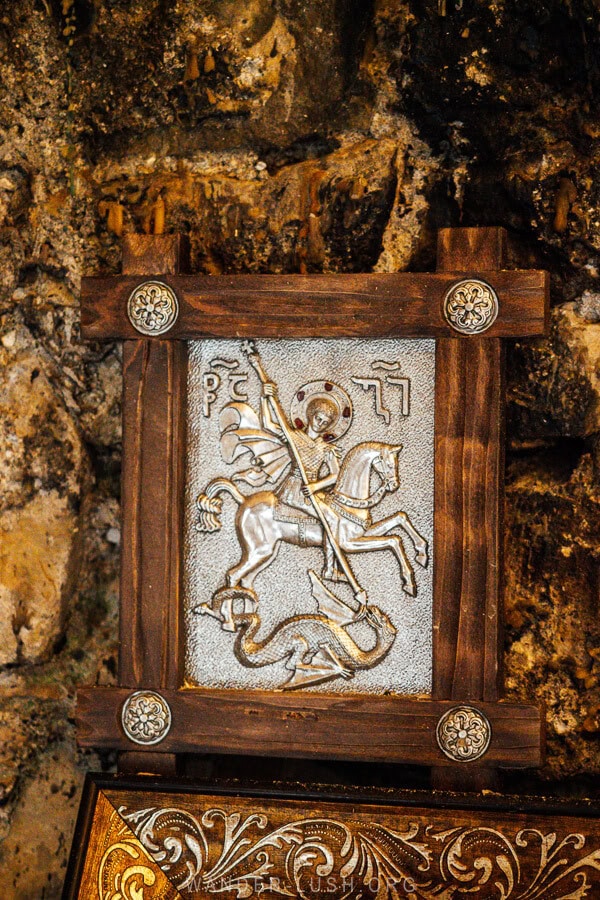
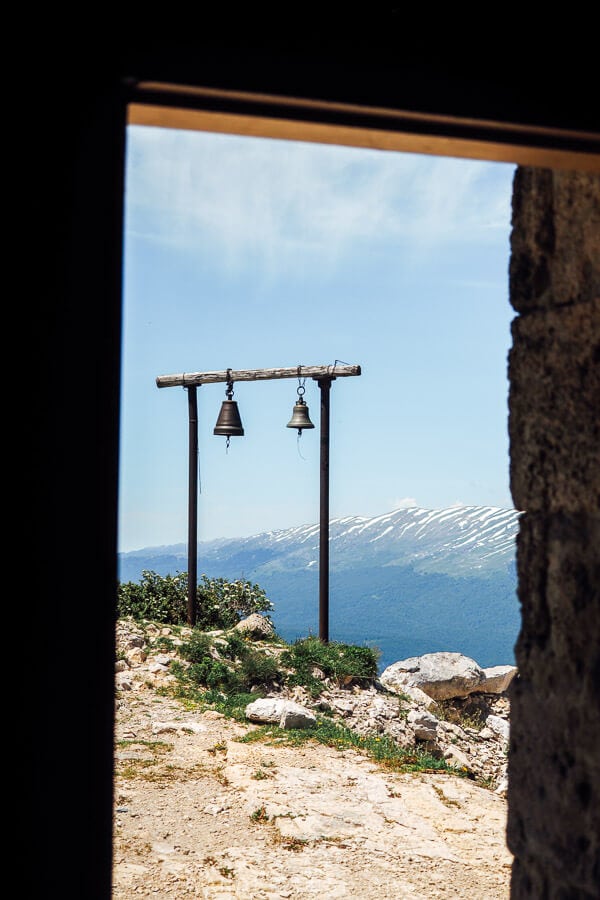
Outside the church there are piles of stones, some engraved, a set of bells, and crosses of all shapes and sizes – offerings carried up the mountain by pilgrims – fixed in the grass. The views from the church are phenomenal, revealing a panorama of mountains and in the valley below, little villages of glimmering tin roofs.
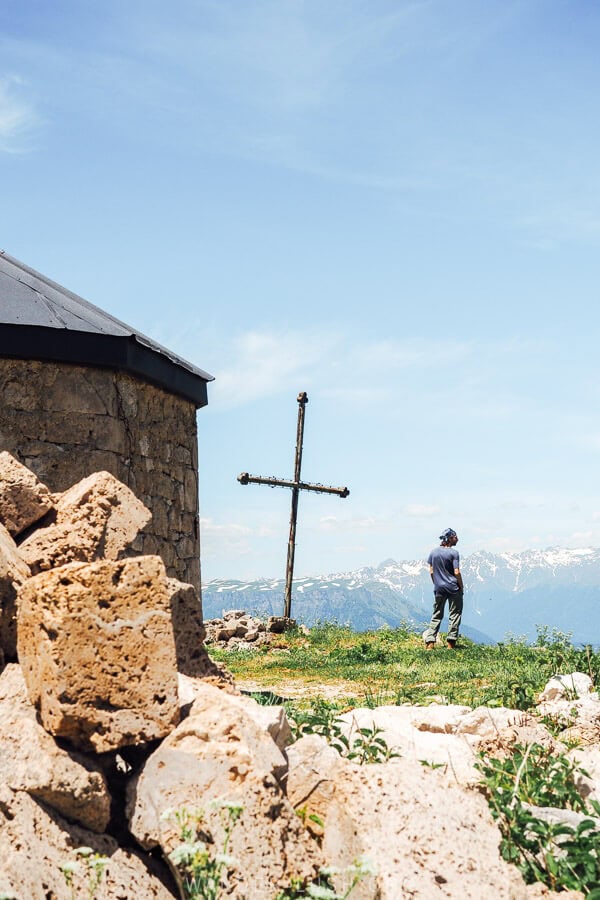
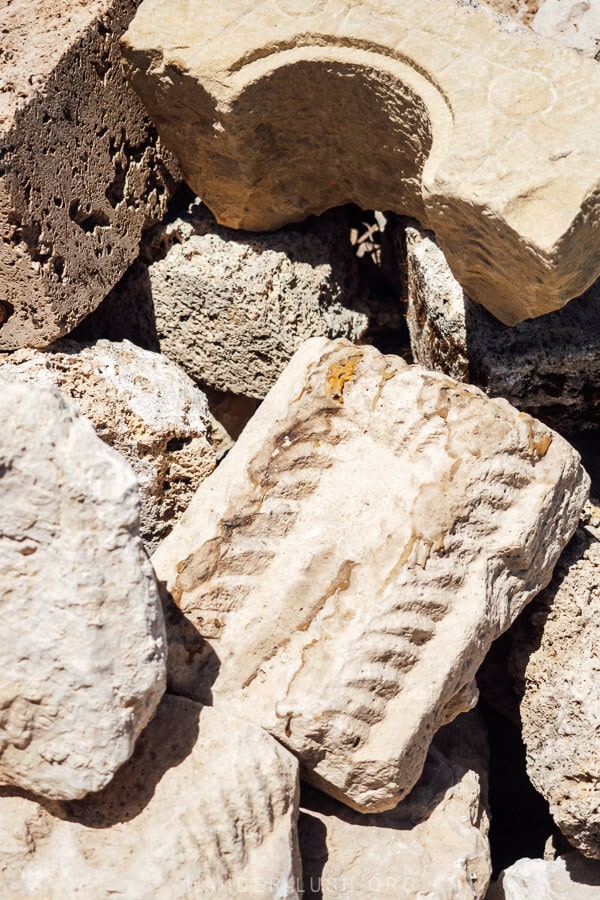
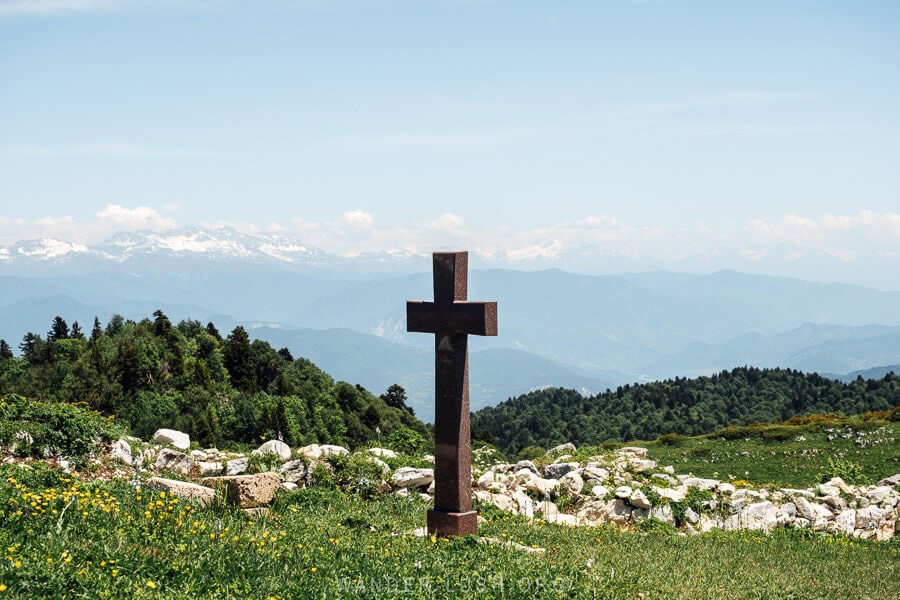
If you have limited mobility or you want to skip the uphill part of the trek, then you could quite happily end your journey here. There are little sidetracks you can take on the grassy hills around the church.
The valley
From the church, walk back down the dirt road to the signpost and make a turn to follow the narrow path towards the peak. From here, it is another 1.2 kilometres to reach the highest point of the mountain.
For the first 10 minutes or so, you are again walking through thick forest. The path is very narrow here and covered in leaf litter. In places, there are boulders cut like steps.
Exiting the forest, you will find yourself in a little valley. This is the most challenging part of the hike, but it only takes around 20 minutes. The path is steep and slippery – luckily there are rocks for traction. This is where we crossed an ice patch and saw other patches of white snow in crevasses all around.
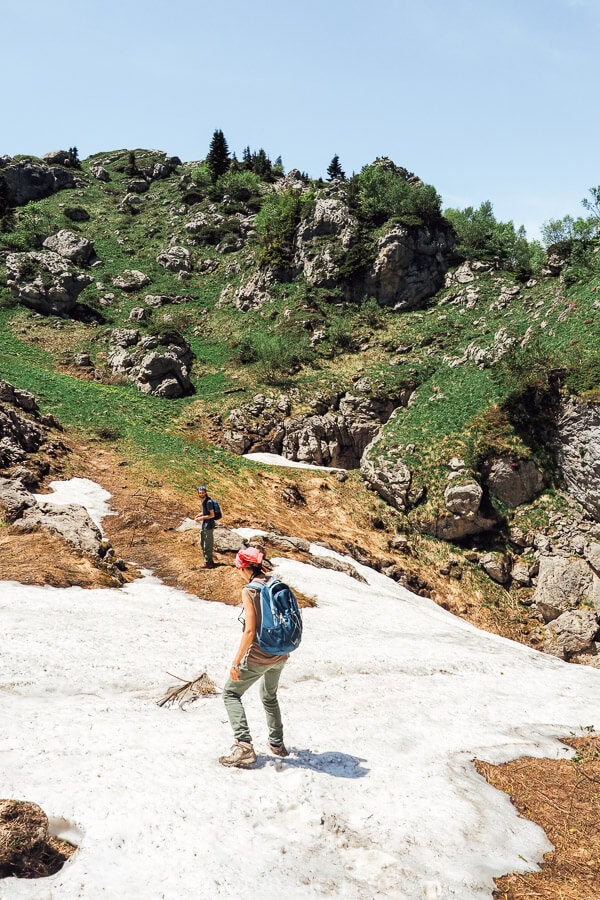
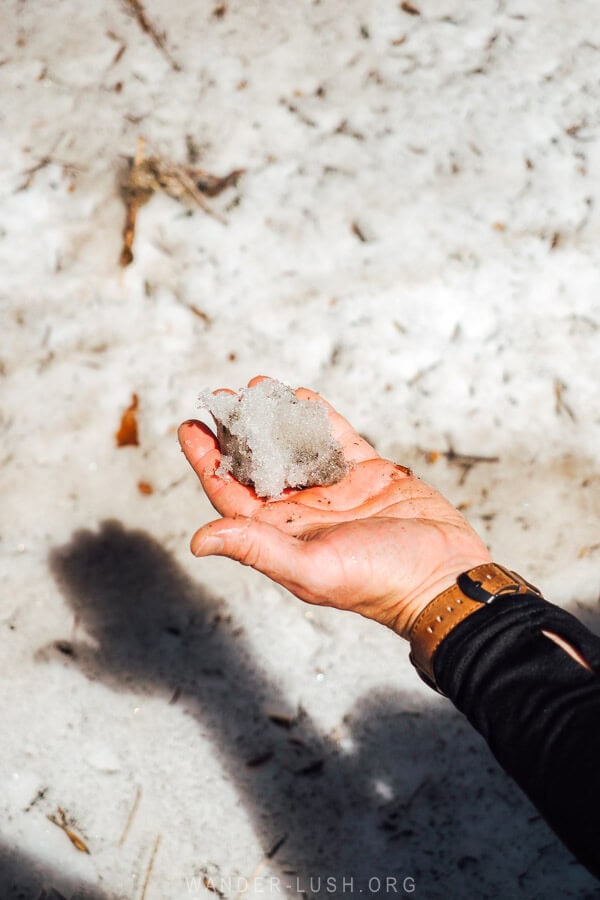
What makes this section difficult is the lack of air flow and the rocks all around that reflect the sun, making it feel oppressively hot.
To the peak
There are several different paths you can follow from the valley up to the peak. All finish in the same place – aim for the giant cross you can see overhead, and you can’t go wrong. The very final part of the ascent takes you over big rocks then wading through knee-high grasses.
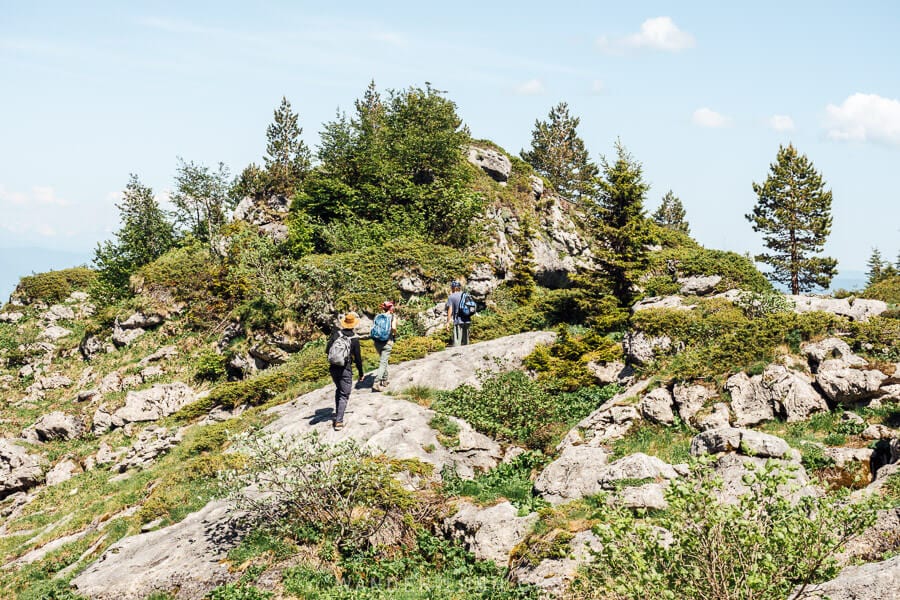
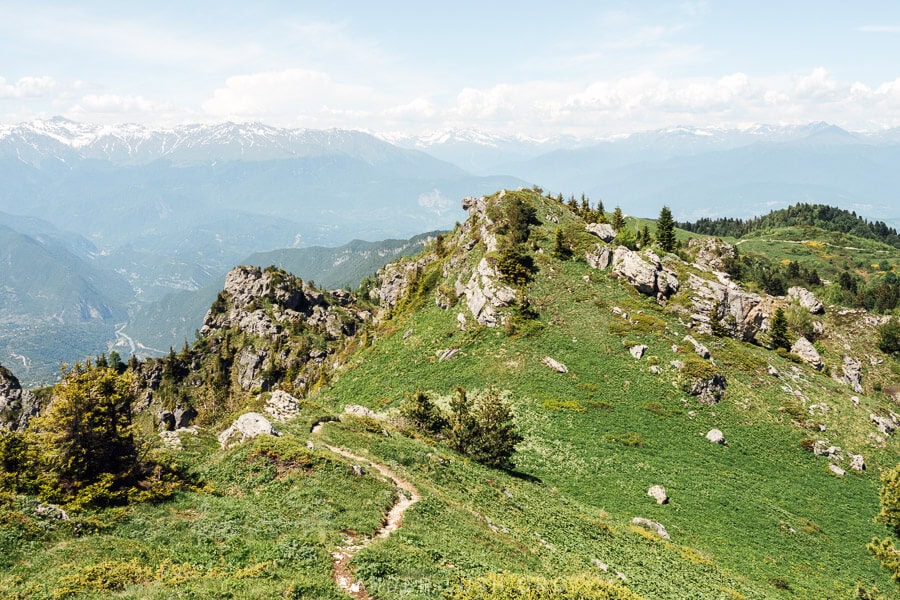
The view from the top
Known to locals as mayak or ‘lighthouse’ in Russian, the summit is marked with a giant white cross. A stunning view opens up to the south.
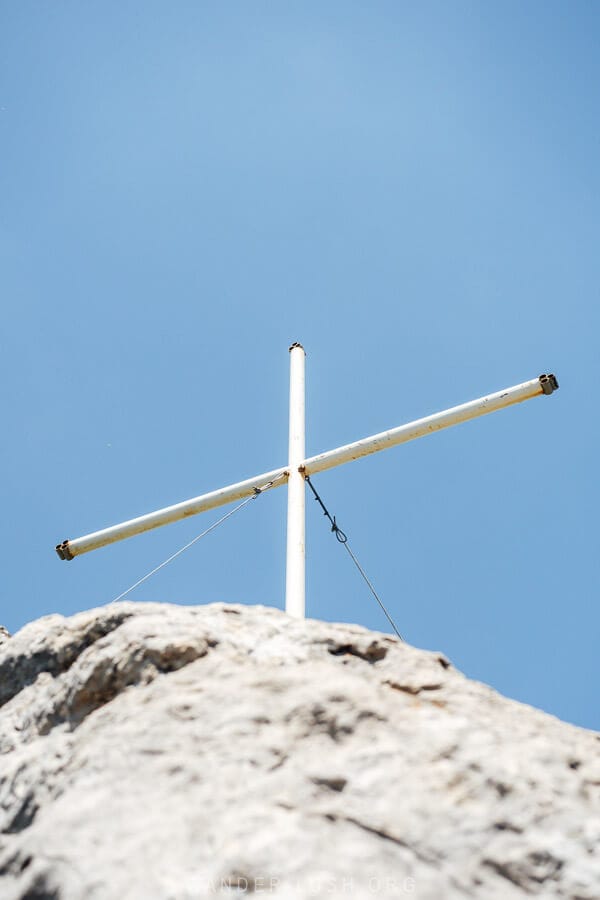
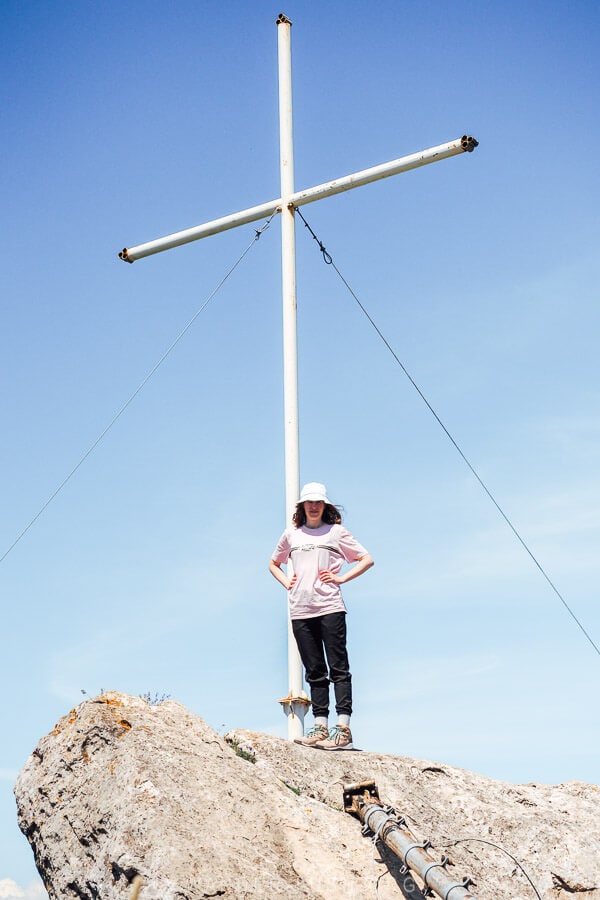
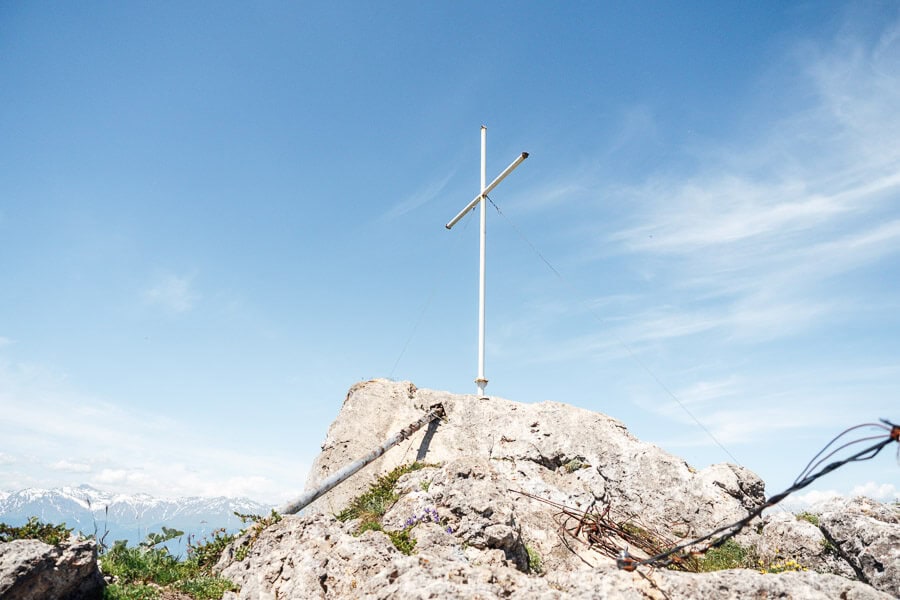
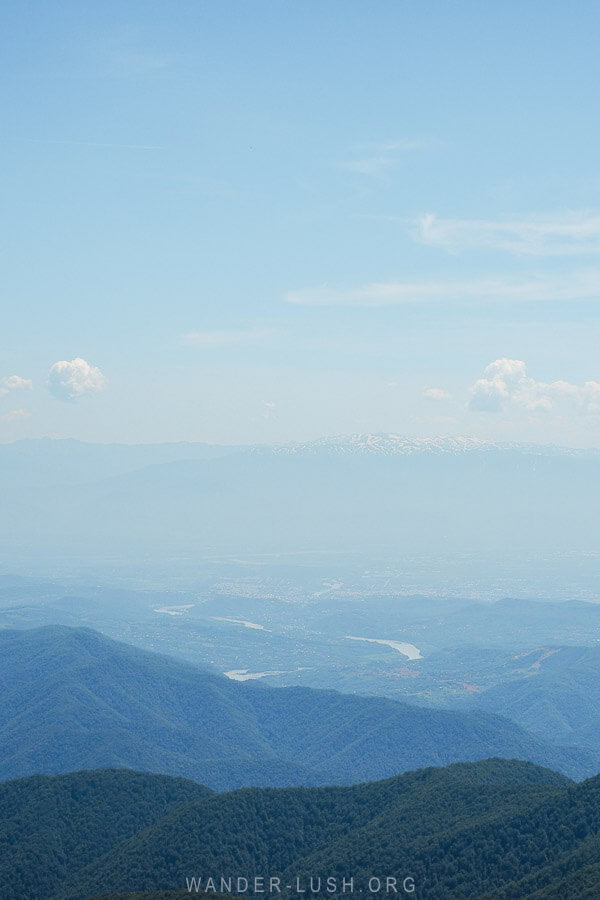
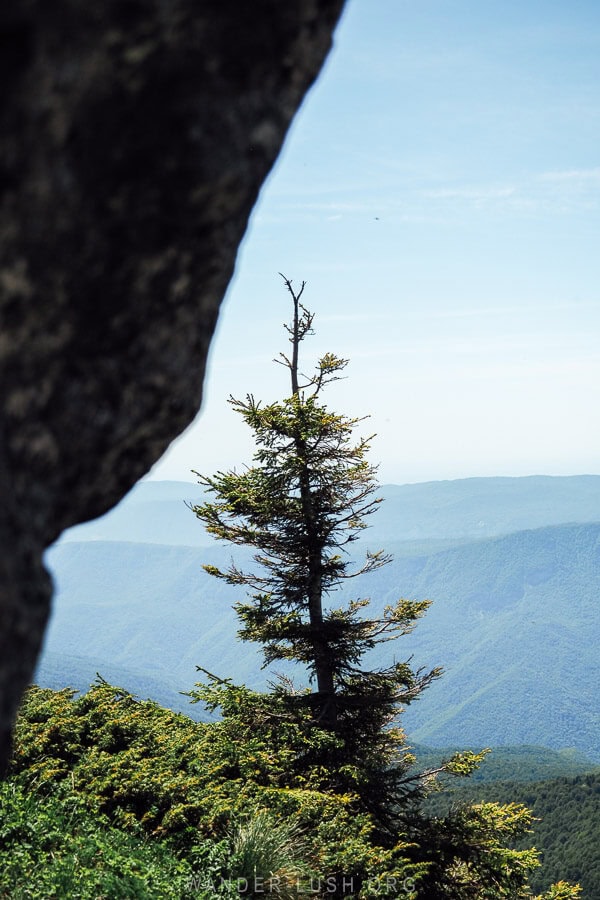
The fern forest & the search for Tekenteri Well
After finishing the hike, we drove back down the road a little and followed a different trail to find Tekenteri Well, a plunging hole partially filled with water and with the trunk of a beech tree wrapped around its opening.
We didn’t find it – Google Maps led us astray – but we did come across a gorgeous pocket of ferns that made the detour well worth it.
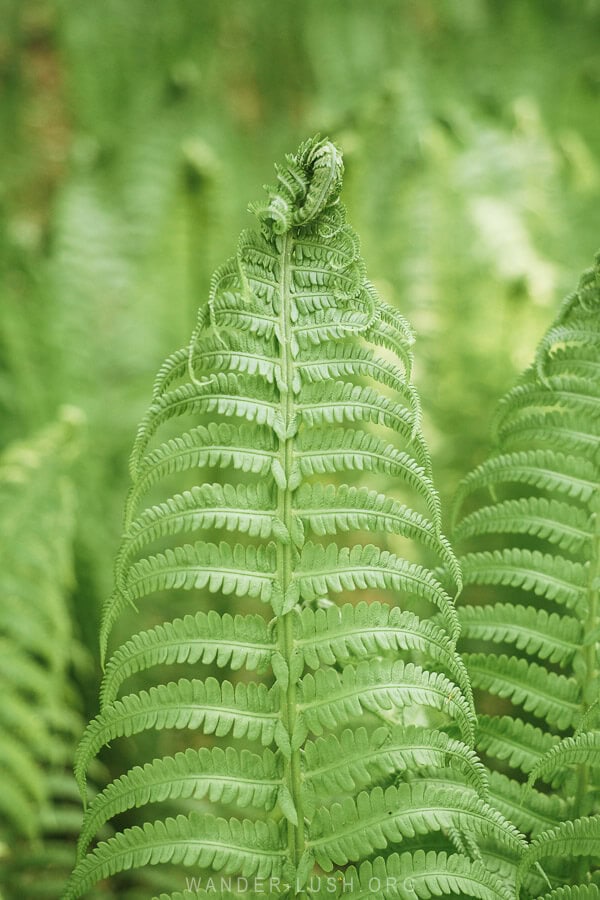
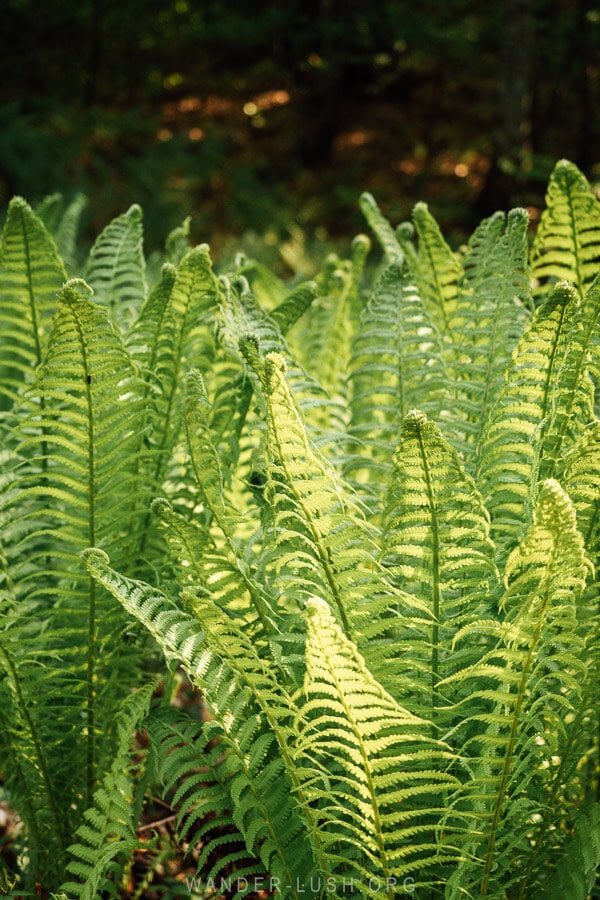
The foliage in this area is very different to what you find on the peak and the plateau, so it is worth stopping here for a little wander.
Rachkha & Ophitara Waterfalls
These two waterfalls are located right off the road on the way from Kutaisi to Khvamli. Both are worth stopping for, but Rachkha is particularly impressive. I don’t think I have seen a waterfall quite so powerful anywhere else in Georgia. My photos really don’t do it justice.
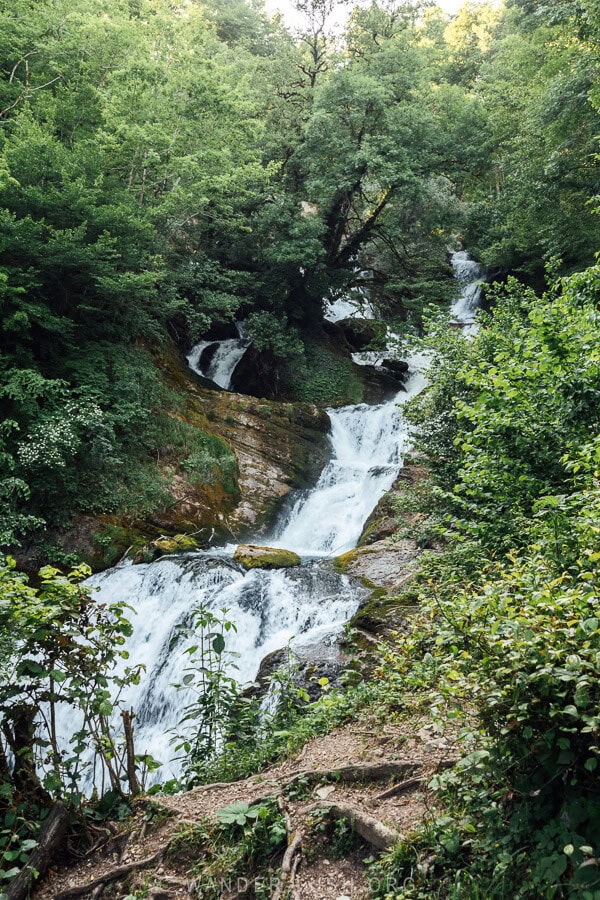
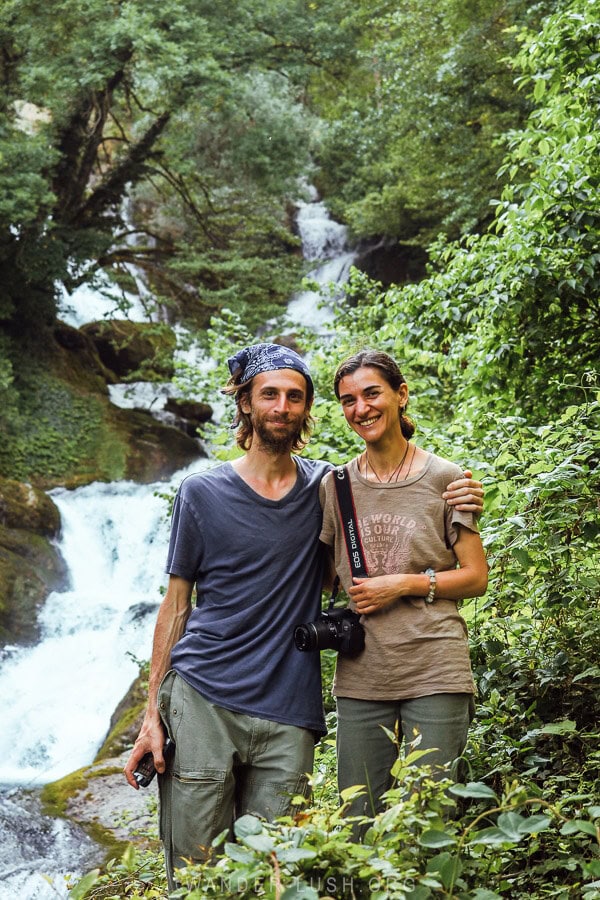
For Ophitara, you can park on the road shoulder. The waterfall lookout point is accessed via a set of metal stairs. Rachkha is a short drive from the main road. At the moment it requires a 4WD (or at least a car with high undercarriage clearance) – but we did see work starting at the time of our visit, so it looks like the road will soon be sealed.
Where to stay in Kutaisi
If it’s your first time visiting Kutaisi, I highly recommend choosing a hotel that’s located in the city centre. See this neighbourhood guide for detailed recommendations, or check out my top Kutaisi accommodation picks below.
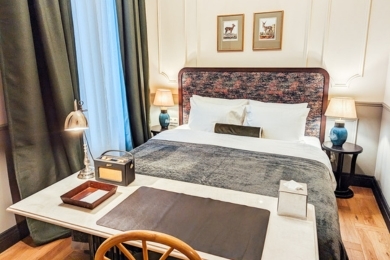
TOP CHOICE: Communal Hotel (⭐ 9.7). Launching in autumn 2023, the latest offering from The Communal Company (also of Communal Telavi and Tbilisi) is Kutaisi’s premier boutique hotel. Rooms are cosy and perfectly decorated, and the property has an outdoor pool and onsite restaurant-bar, Doli.

BUDGET-FRIENDLY: Black Tomato (⭐ 9.2). This popular hostel in historic Sapichkhia offers both dorms and private doubles with ensuites. The terrace garden is lovely, and the onsite Georgian-Jewish restaurant serves a delicious breakfast plus meals throughout the day.
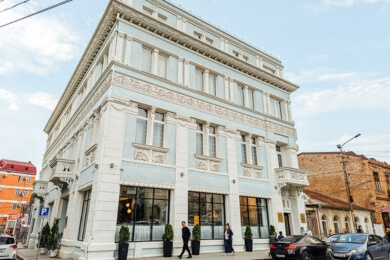
MID-RANGE: Newport Hotel (⭐ 9.1). Located on the cusp of Kutaisi’s historic Jewish Quarter, behind the Colchis Fountain, this hotel is located inside the former Kutaisi Courthouse. Rooms are comfortable, the service is friendly, and the onsite bar-restaurant is excellent.
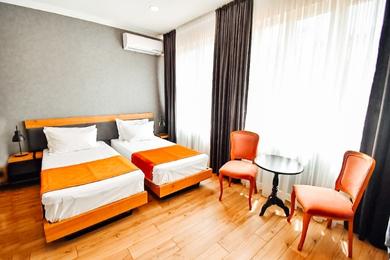
MID-RANGE: Hotel 1887 (⭐ 9.2). This historic 19th-century house is a 10-minute walk from the Colchis Fountain. Rooms pair original wooden panelling and parquet floors with minimal, Scandi-style furnishings. There is a garden, and some rooms have private balconies.

UP-SCALE: Hotel Grand Opera (⭐ 8.7). Situated in the heart of Kutaisi centre, this hotel has a magnificent rooftop bar overlooking the Opera Theatre. Expect well-appointed rooms and a generous breakfast from this hotel with a location that’s impossible to beat.



